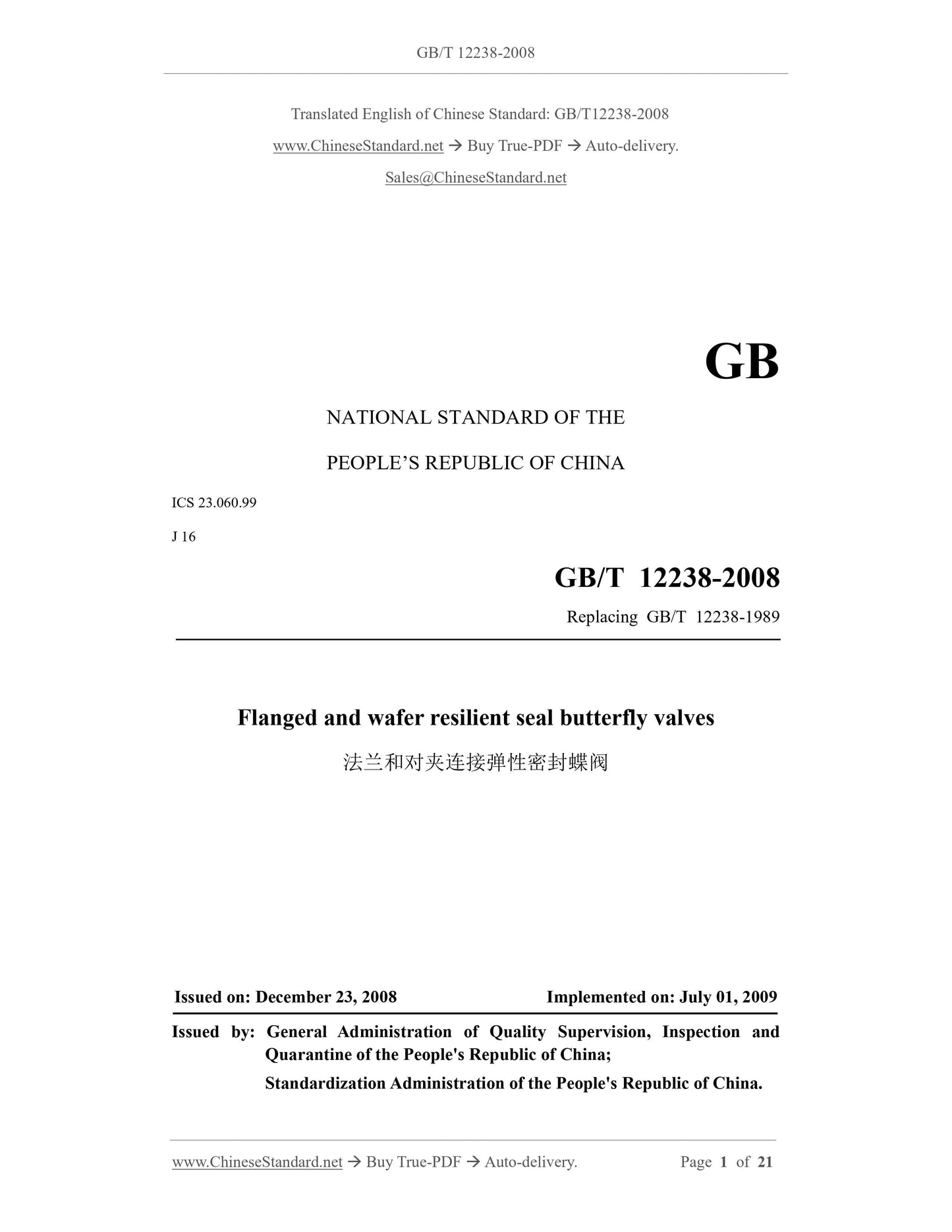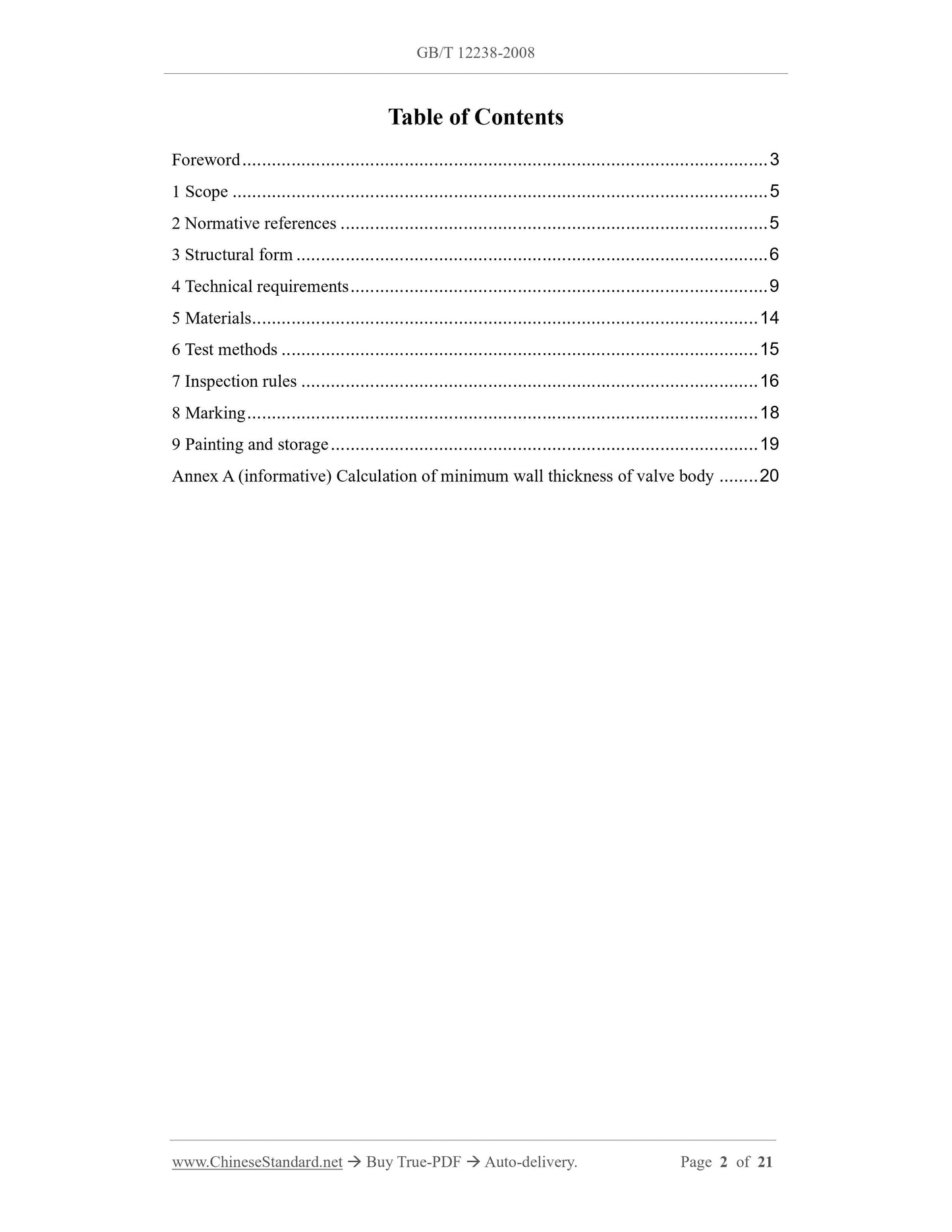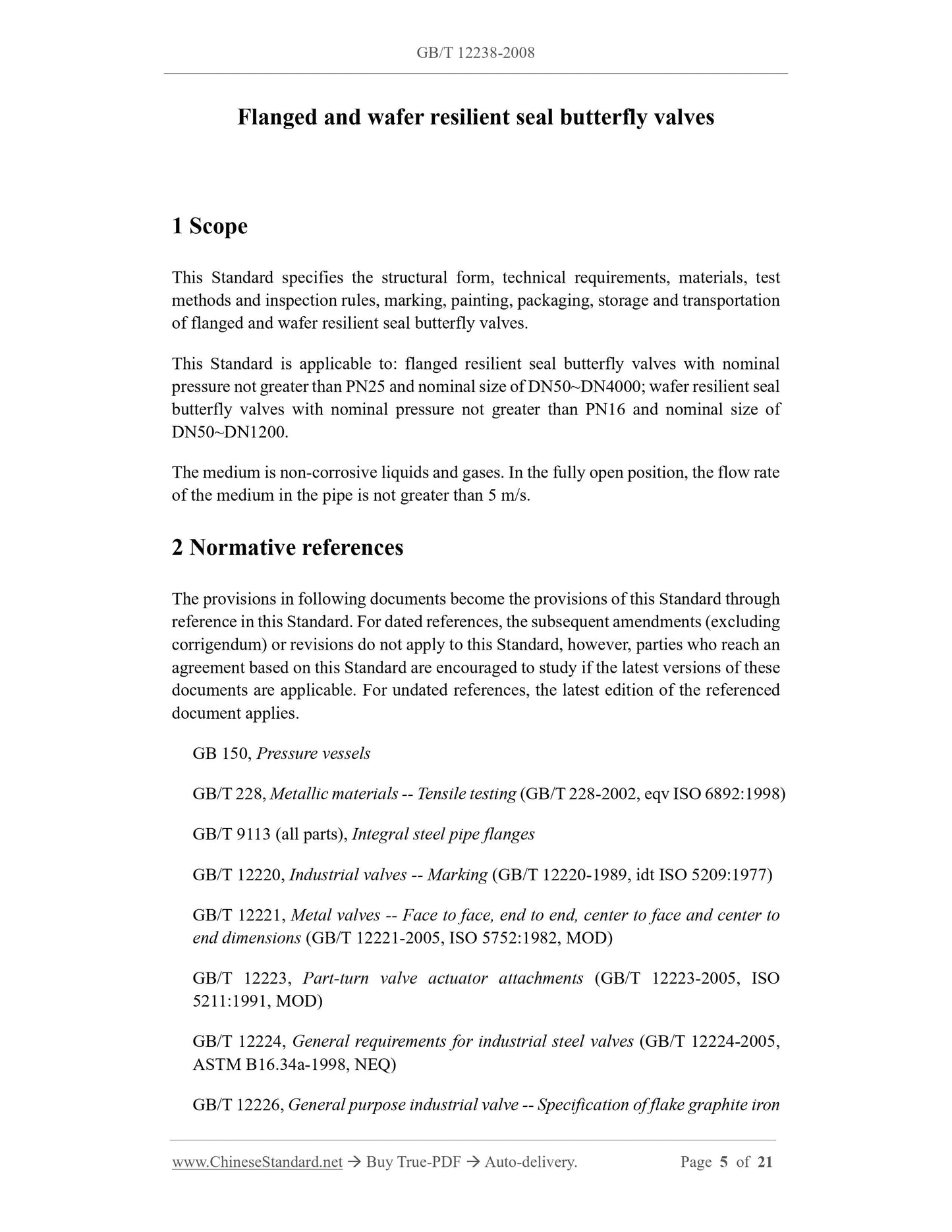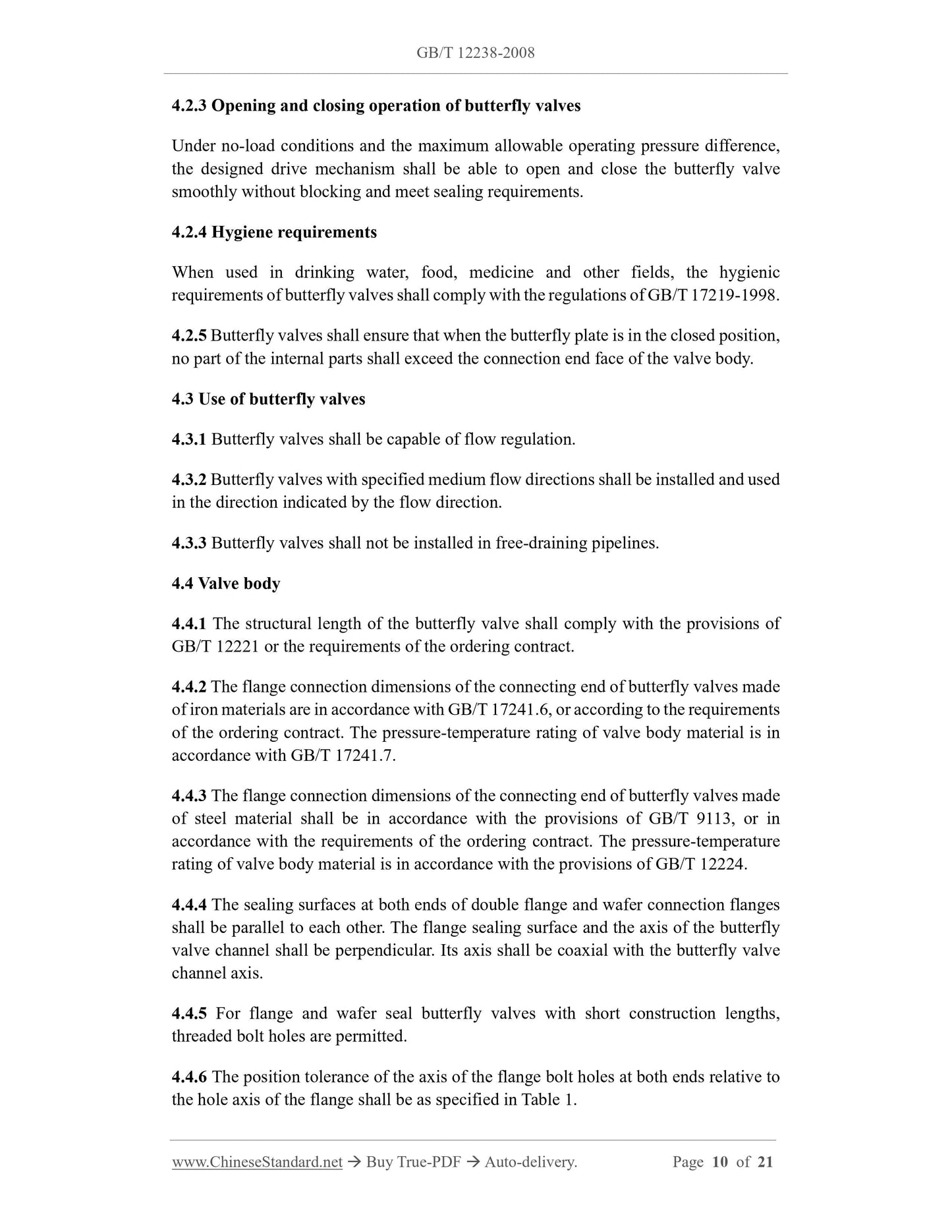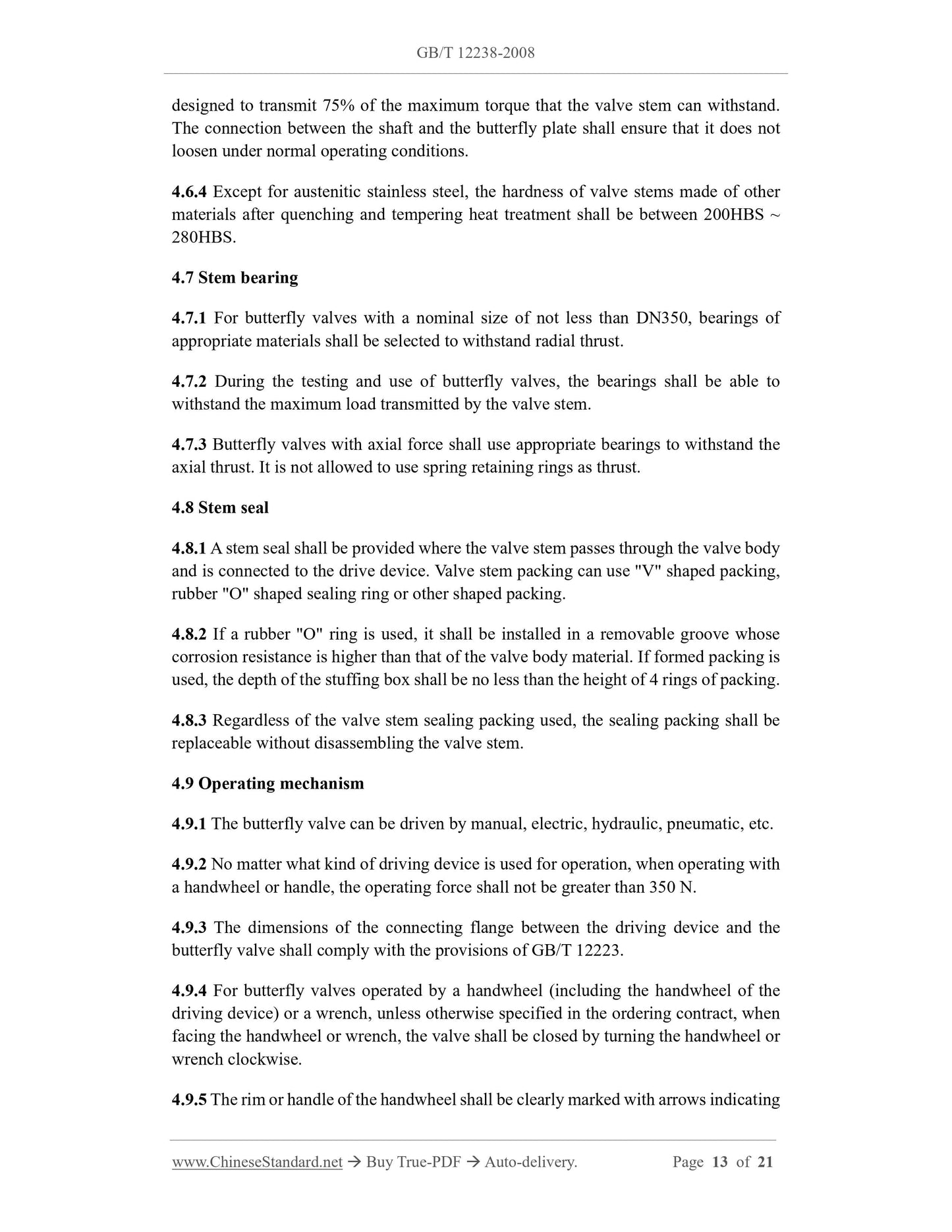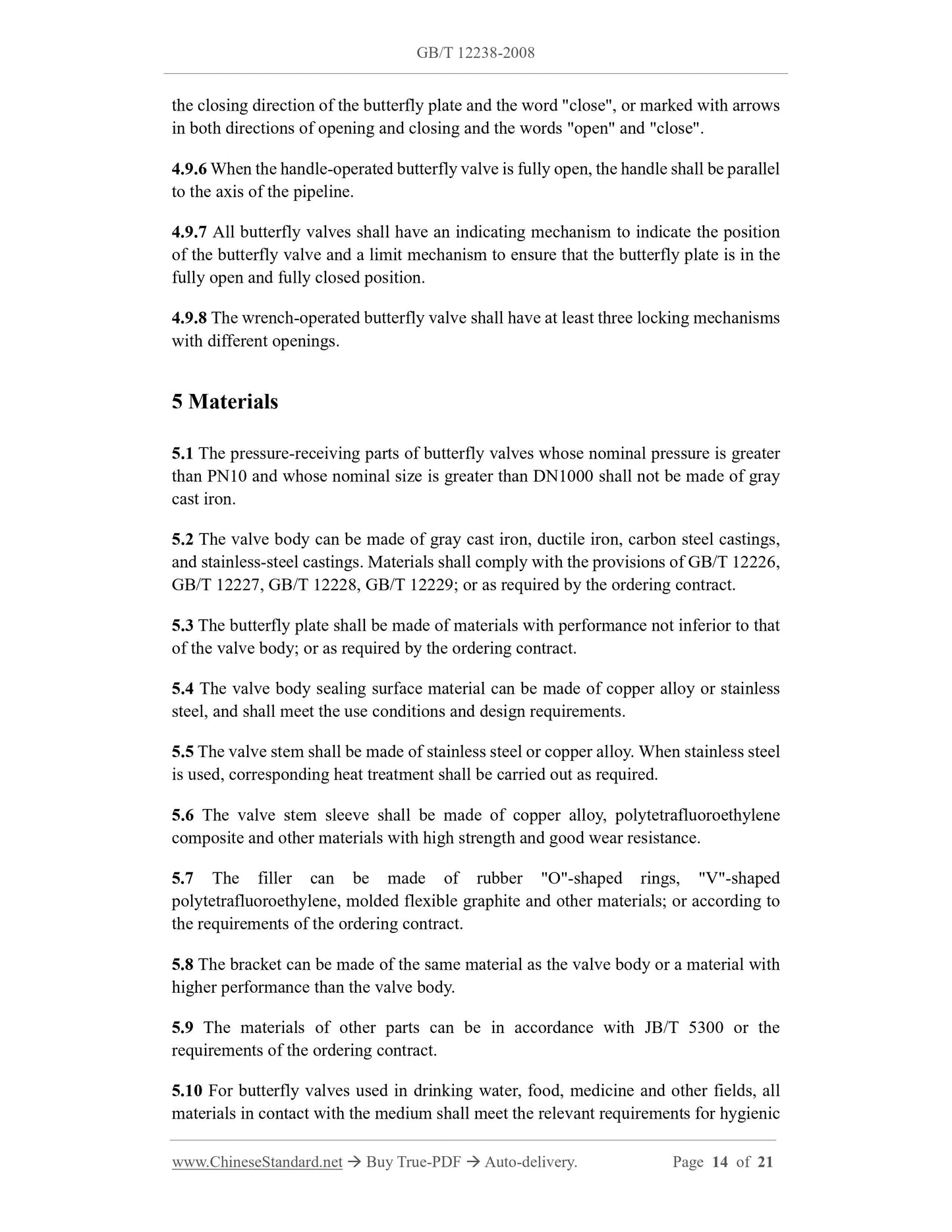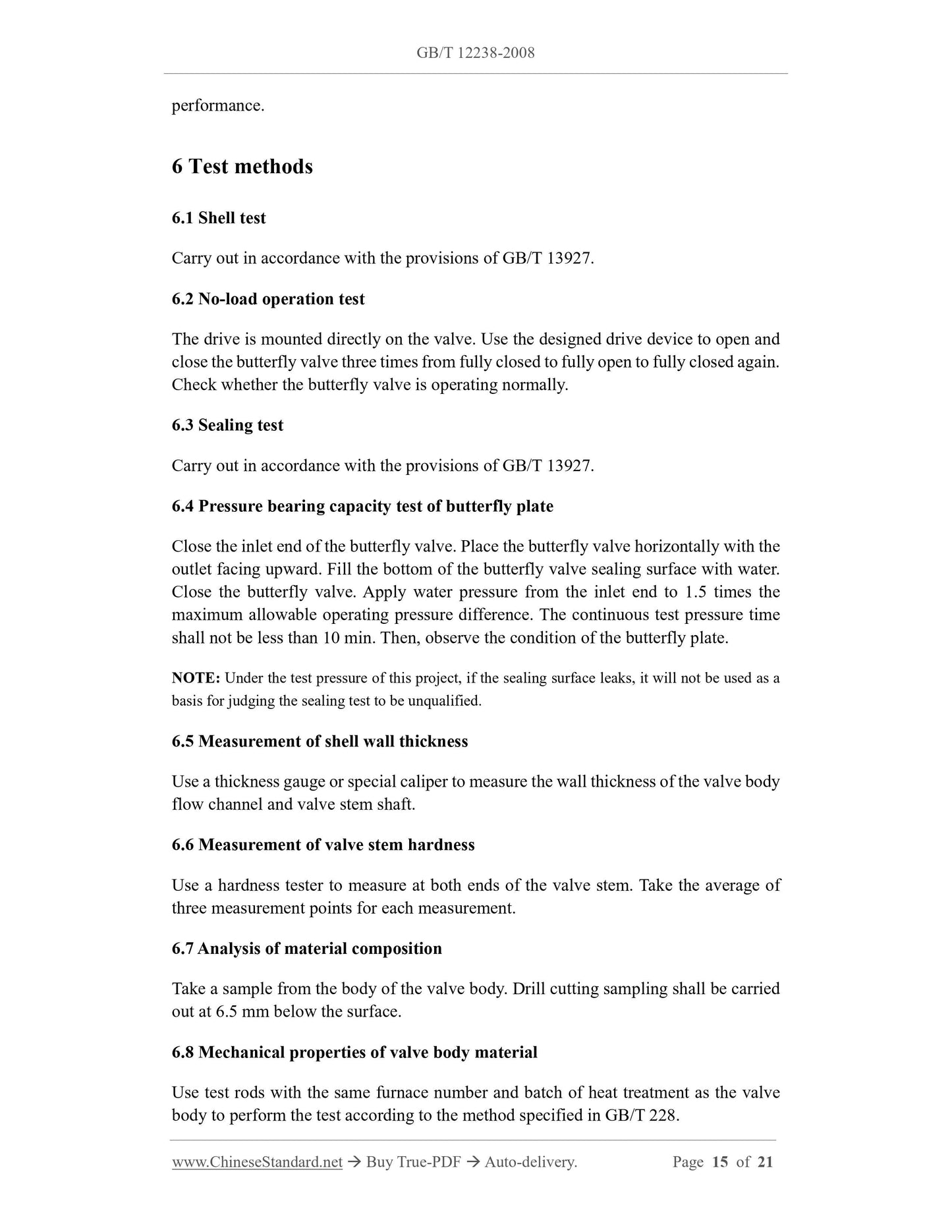1
/
of
7
www.ChineseStandard.us -- Field Test Asia Pte. Ltd.
GB/T 12238-2008 English PDF (GB/T12238-2008)
GB/T 12238-2008 English PDF (GB/T12238-2008)
Regular price
$105.00
Regular price
Sale price
$105.00
Unit price
/
per
Shipping calculated at checkout.
Couldn't load pickup availability
GB/T 12238-2008: Flanged and wafer resilient seal butterfly valves
Delivery: 9 seconds. Download (and Email) true-PDF + Invoice.Get Quotation: Click GB/T 12238-2008 (Self-service in 1-minute)
Newer / historical versions: GB/T 12238-2008
Preview True-PDF
Scope
This Standard specifies the structural form, technical requirements, materials, testmethods and inspection rules, marking, painting, packaging, storage and transportation
of flanged and wafer resilient seal butterfly valves.
This Standard is applicable to: flanged resilient seal butterfly valves with nominal
pressure not greater than PN25 and nominal size of DN50~DN4000; wafer resilient seal
butterfly valves with nominal pressure not greater than PN16 and nominal size of
DN50~DN1200.
The medium is non-corrosive liquids and gases. In the fully open position, the flow rate
of the medium in the pipe is not greater than 5 m/s.
Basic Data
| Standard ID | GB/T 12238-2008 (GB/T12238-2008) |
| Description (Translated English) | Flanged and wafer resilient seal butterfly valves |
| Sector / Industry | National Standard (Recommended) |
| Classification of Chinese Standard | J16 |
| Classification of International Standard | 23.060.99 |
| Word Count Estimation | 13,124 |
| Date of Issue | 2008-12-23 |
| Date of Implementation | 2009-07-01 |
| Older Standard (superseded by this standard) | GB/T 12238-1989 |
| Quoted Standard | GB 150; GB/T 228; GB/T 9113; GB/T 12220; GB/T 12221; GB/T 12223; GB/T 12224; GB/T 12226; GB/T 12227; GB/T 12228; GB/T 12229; GB/T 13927; GB/T 17219-1998; GB/T 17241.6; GB/T 17241.7; JB/T 106; JB/T 5300; JB/T 7928 |
| Regulation (derived from) | National Standard Approval Announcement 2008 No.21 (Total No.134) |
| Issuing agency(ies) | General Administration of Quality Supervision, Inspection and Quarantine of the People's Republic of China, Standardization Administration of the People's Republic of China |
| Summary | This standard specifies the connection flange and clamp structure of the elastic sealing butterfly valve, technical requirements, test methods and inspection rules, , material signs, painting, packaging and storage. This standard applies to: no more than nominal pressure PN25, nominal size flange connection DN50 ~ DN4000 elastic sealing butterfly valve, nominal pressure of not more than PN16, the nominal size of the clip to connect the elastic sealing butterfly valve DN50 ~ DN1200 's. Medium of non- corrosive liquids and gases, the fully open position, the flow rate of the medium in the pipe is not more than 5m/s. |
Share
